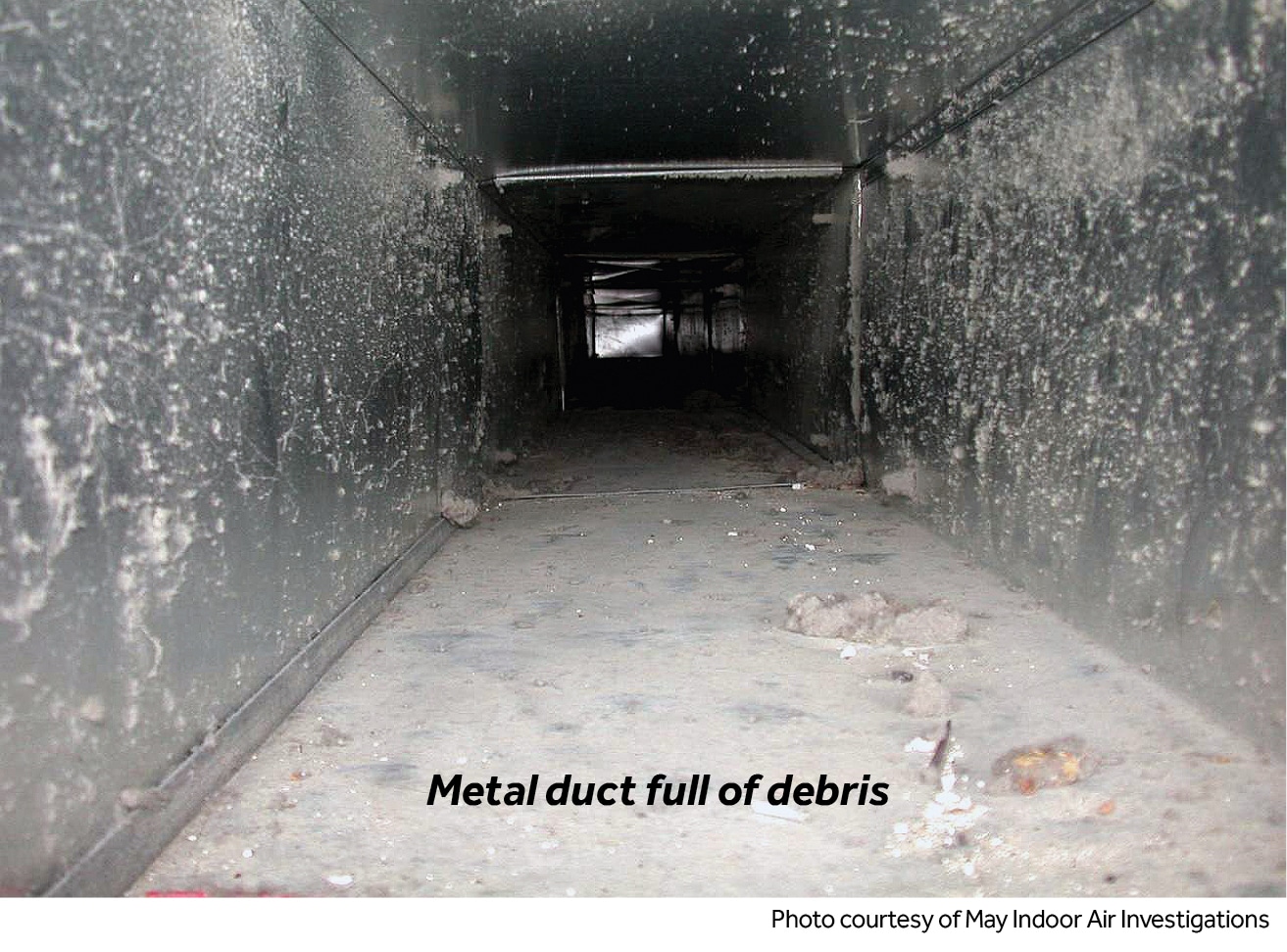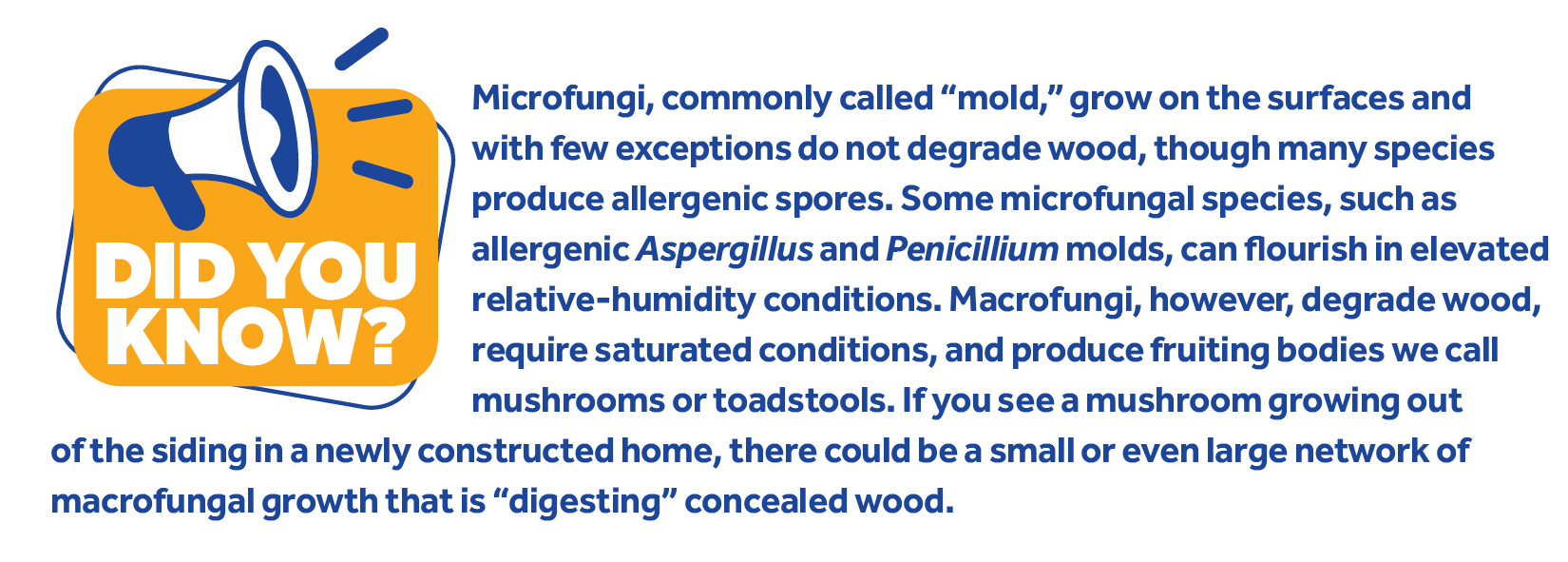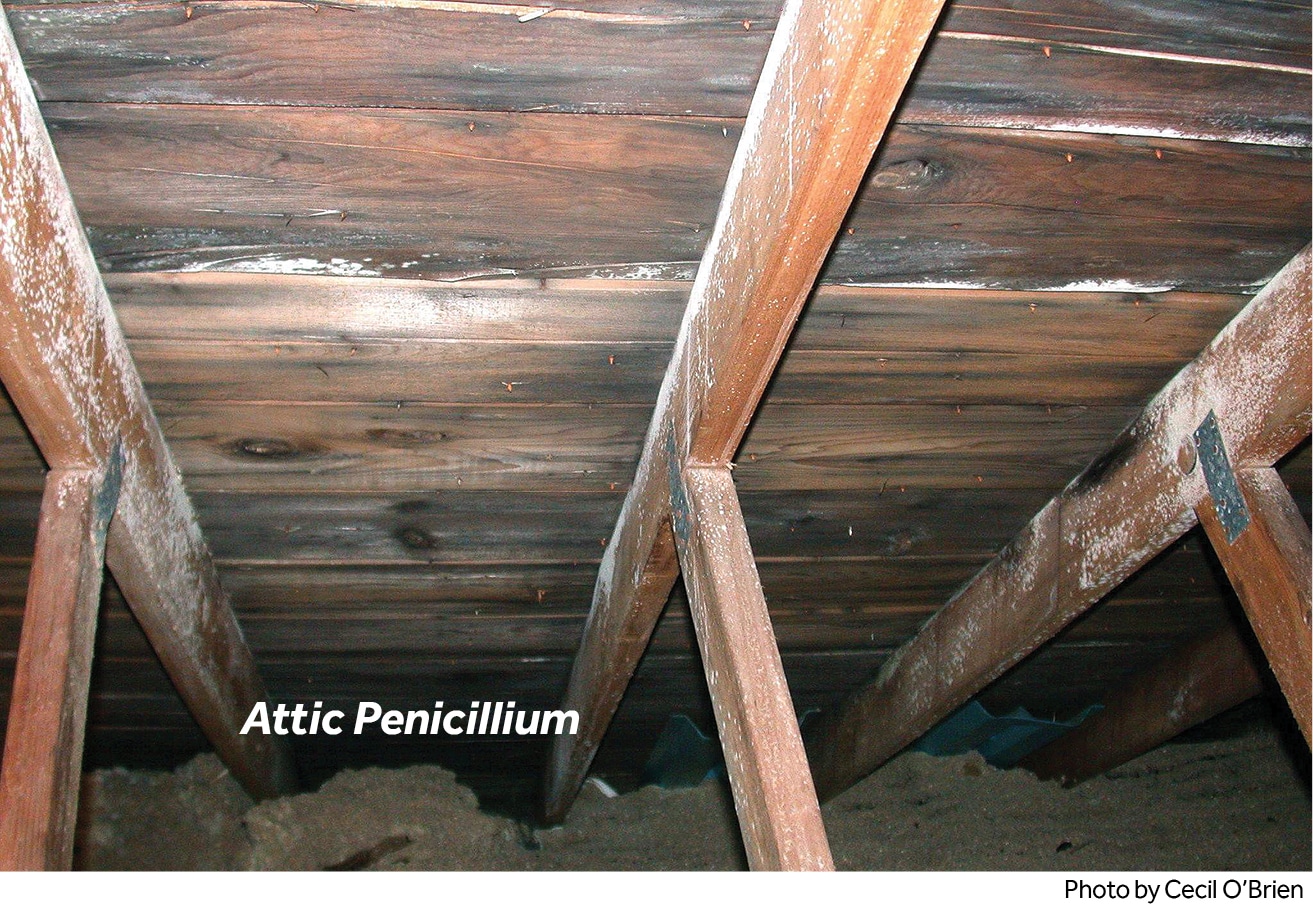New Construction Snafus

Before I became an indoor air quality (IAQ) professional, I was a contractor and a home inspector. During my home inspections and IAQ investigations of newly constructed homes,
I found many problems that worried me, no matter what professional “hat” I wore. Here are some
real-life experiences:
The Two-Family That Threatened Occupants’ Health
Two furnaces were suspended from the ceiling of the four-car garage located beneath the condominiums. The filter slots were open, so combustion products in engine exhaust—including carbon monoxide—would be entrained into the system. The buyer declined to purchase the property.
The Unfinished Basements That Made Prospective Buyers Sneeze
In the first of these two houses, the basement slab was poured during very humid weather. The basement wasn’t being dehumidified and, as a result, as the concrete cured, the high relative humidity (RH) led to non-visible mold growth on the joists and subfloor. This growth was subsisting on the sugars and starches on the surfaces of the wood.
In the second home, workers had sawed wood in the basement. The exposed fiberglass insulation in the basement looked pristine but was full of allergenic Aspergillus mold growing on the microscopic sawdust particles that were captured between the fiberglass fibers. Any time the insulation was disturbed, thousands of spores would be aerosolized. Woe to anyone with mold sensitivities who might contemplate purchasing this property!
Ducts and Air Handlers Full of Mold
This was a custom-built, 7,000-square-foot house with a hydro-air system and multiple air-handling units. Every time the prospective buyer visited the property, her eyes would itch and her nose ran. During construction, the workers operated the heating and cooling equipment, and the ducts were full of construction debris, including biodegradable sawdust. The air handlers were full of mold, growing on sawdust that was captured in the exposed fibrous lining material in the blower cabinets and on the access panels.
The builder had removed pleated-media filters from the AHUs because he didn’t want the expensive filters to get dirty, and the filter holders were all open. The builder hired someone to vacuum the lining material, which damaged some of the material. My advice was to dismantle the AHUs and clean the blower cabinets, blower blades, coils, and other components in the AHUs, as well as the ducts; and replace the soiled, exposed fibrous lining material with closed-cell foam. My recommendations were not followed. Fortunately the buyers were able to walk away from the deal because the builder had not met the construction deadline in the contract.

Rotting Framing Before Construction Was Completed
The foundation had been poured, and the first floor decking was in place. With no potential buyer in sight, the builder stopped construction and covered the deck with a tarp. The bulkhead was left open to the weather and rain poured in and ran onto the concrete basement slab. This moisture was trapped by the framing and tarp, and temperature fluctuations led to condensation of water on the framing. The wet framing was covered with mushrooms and was decayed, and had to be replaced.

A High-End Project with Many Pre-Occupancy Problems
This property was on a high bluff overlooking the ocean. There was an overhang on that side of the house, but the window casings lacked window-cap flashings to shed water away from the top horizontal trim boards. The house was under construction for more than a year. Rain had dampened building materials on the northeast-facing side, and water stains and mold growth had ensued on floor sheathing and joists.
The basement was being dehumidified, but the dehumidifier did not have adequate capacity for the space. In addition, one room (the only one with a door and finished walls) was closed off from the dehumidification. There was a forest of green mold
on the inside of the door.
The house was piped for radiant heat, but it also had central air conditioning with a high-velocity system with two-inch ducts. The construction team was not operating this system, but still, some of these small ducts were not sealed at the ends and were no doubt contaminated with biodegradable dust. There were also some sheet-metal ducts sitting on the basement floor. The interior of these ducts was already covered with biodegradable sawdust.
A House Under Construction That Backed Up to a Small Hill
A gutter system had not yet to be installed. After several days of heavy rain, the finished basement flooded. The floor and framing became moldy, so these surfaces had to be cleaned and sealed. At the exterior, the grading had to be adjusted to direct water away from the foundation wall, and a gutter system had to be installed.
A New, Smelly House
The new owner had moved out of the house and into an apartment. The house had a large, two-story great room. When I entered this part of the home, I noticed an omnipresent chemical odor. I discovered that the odor was strongest at the exterior and interior corners of the drywall, as well as at vertical strips every 16 inches on center along the walls at the first floor. Whoever had installed the drywall had used moldy joint compound, to which the contractor had added fungicide, and the chemical was off-gassing into the house. The new owner had to replace all the first-floor drywall or cover the walls with another layer of foil-backed drywall—a prospect that presented all sorts of problems with adjustments to baseboard trim, windows, outlets, and more.
It’s true that fiberglass cannot be fodder for mold growth; but mold in fiberglass insulation is subsisting on the dust captured within the fiberglass fibers.

Mold Growth in an Attic
A builder called me because there was mold growth visible in the attic on the back of the ceiling drywall in
a recently completed home. Another builder called me because there was mold growth on the eaves framing in a different newly constructed home. In both cases the homes had SPF insulation installed between the rafters, were built in the spring and summer, and were completed in the fall. The drywall was skim-coated and the walls primed and painted. Many gallons of water from the plaster and paint had evaporated into the house air, and with the windows closed in the late fall, the moisture had evaporated onto the cold interior surfaces of the attic. High humidity and/or condensation led to mold growth.
What can home inspectors watch out for in new construction?
- 1. Visible mold growth on attic sheathing.
- 2. A moisture meter that indicates that the moisture content of bare wood is above 20%—a condition conducive to mold growth. Keep in mind that for RH levels between 20 and 80%, the equilibrium moisture content of wood should be about one-fifth of the indoor RH.
- 3. Ducts and/or AHUs full of biodegradable dust.
- 4. A basement in which wood has been sawed and in which elevated relative humidity (RH) conditions might exist or have existed or in which water intrusion had occurred.
- 5. Dusty, exposed basement fiberglass insulation.
Opinions or statements of authors are solely their own and do not necessarily represent the opinions or positions of ASHI, its agents, or editors. Always check with your local governmental agency and independently verify for accuracy, completeness, and reliability.
To Read the Full Article
ASHI offers its members unparalleled resources to advance their careers. ASHI offers training for inspectors at all levels of knowledge and experience, including resources about all major home systems. Members benefit from a vast network of experienced professionals, providing a community for mentorship and knowledge sharing..
In this Issue
A Greeting from the New ASHI President
Are Home Inspectors in Demand?
Postcards from the Field
Right is right, and right always prevails.
New Year, New Opportunities
Bringing the Experts to You
Inspecting New Homes
Advertisement
InspectorPro Insurance
FIND A HOME
INSPECTOR
Professional Networking
Grow your professional network, find a mentor, network with the best, and best part of the community that’s making home inspection better every day.
